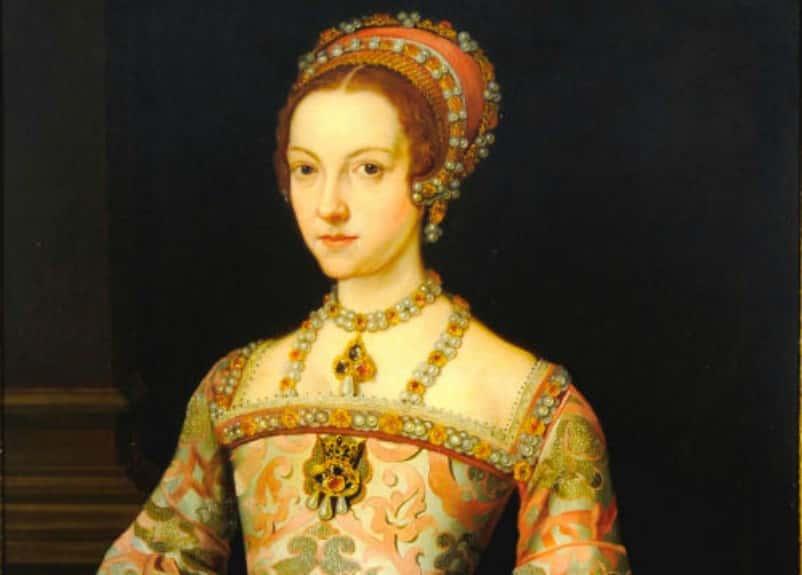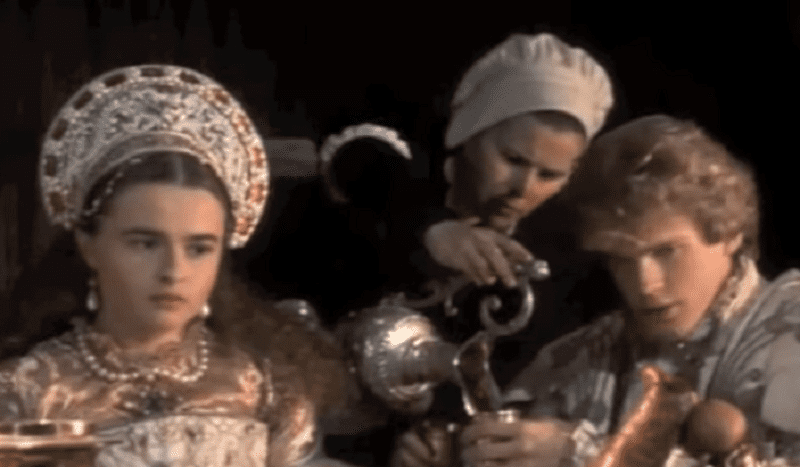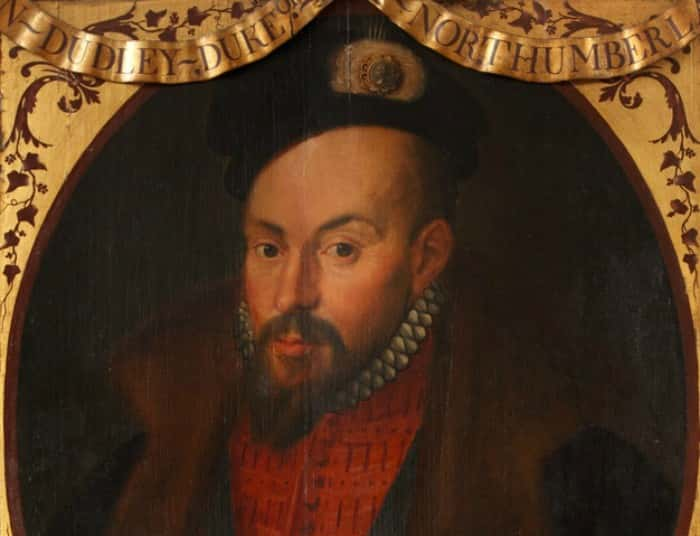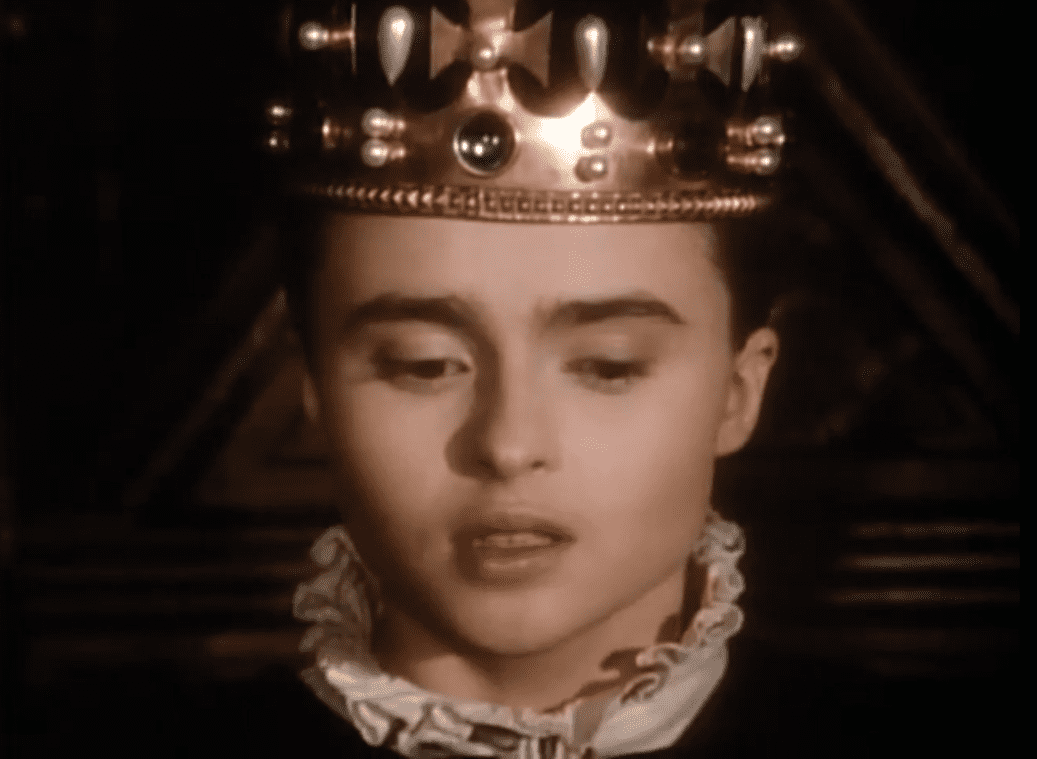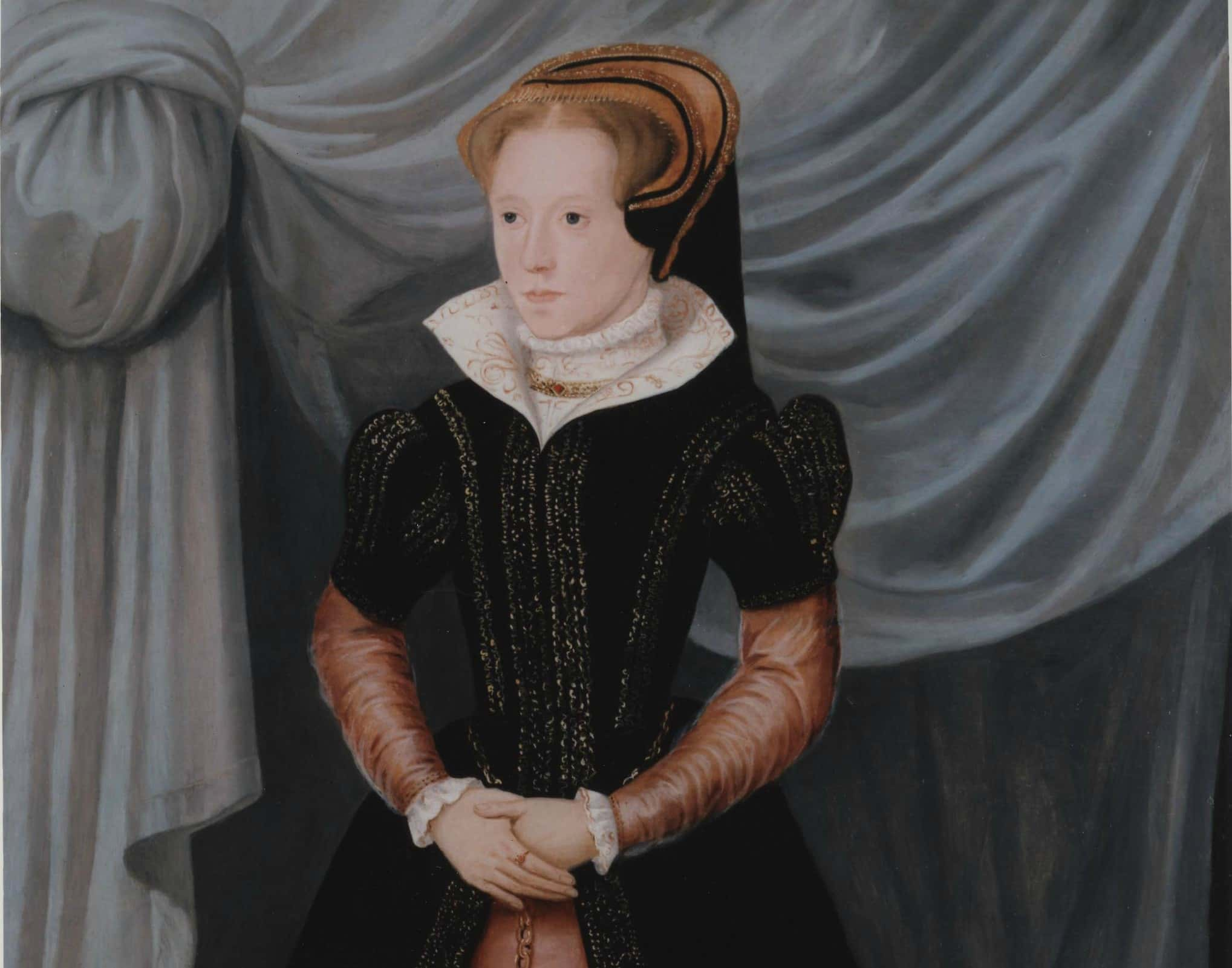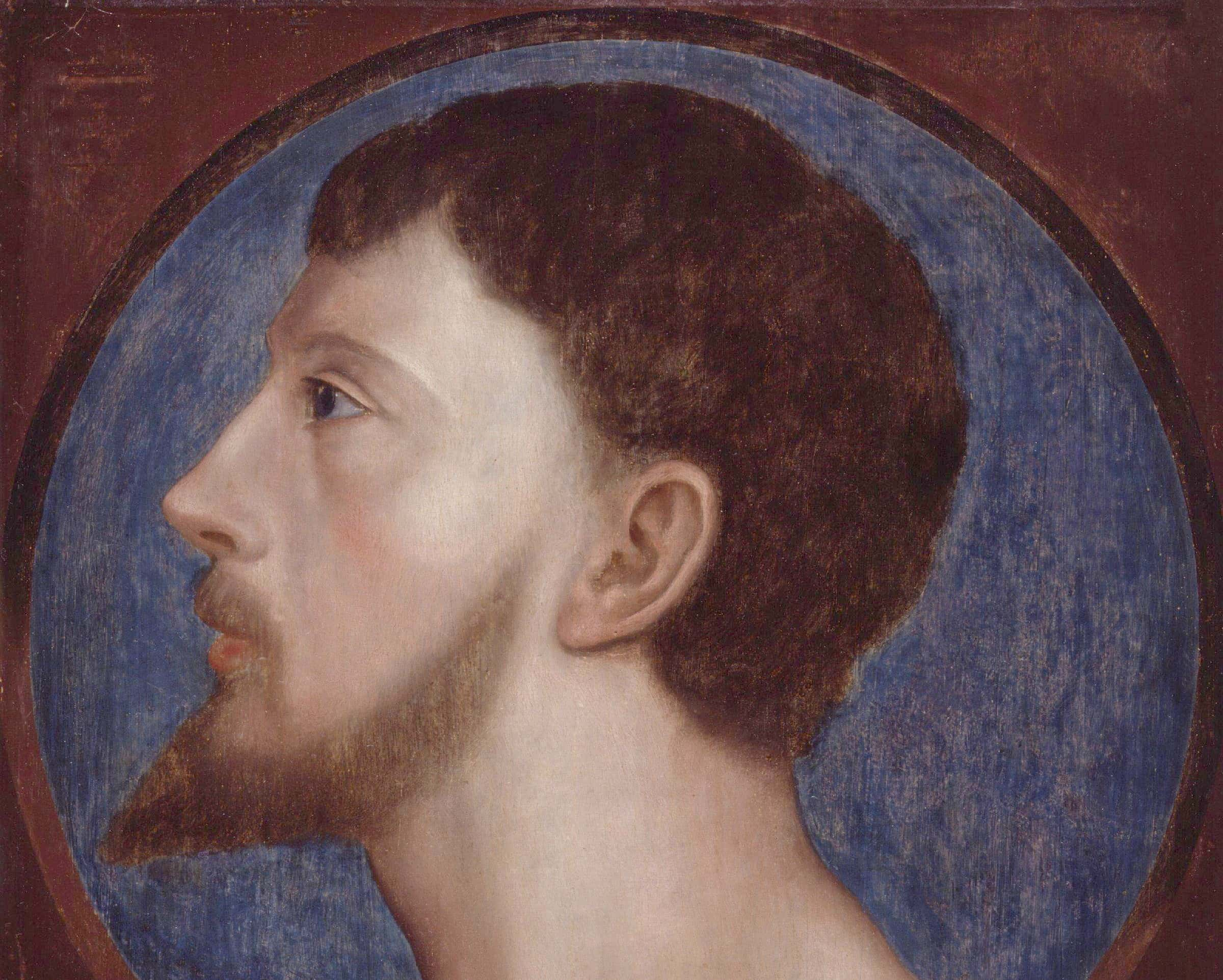Tucked quietly between the reigns of her cousins Edward VI and Mary I, Lady Jane Grey isn’t called the "Nine Days Queen" because her reign was long and prosperous. Her story has the basic ingredients of legend: her Protestant martyrdom, her brutal end, and her unlikely Cinderella-like ascension—right down to the (allegedly) abusive parents. These tropes have invited romantic artists and Protestant polemics alike to build the unlucky teen into the ultimate symbol of virgin sacrifice. Behind the legend, what was Jane Grey really like? Was she so passively a pawn? Could her dark fate have been prevented? Climb the scaffold with these 42 facts about Lady Jane Grey, England’s Nine Days Queen.
1. A Dubious Title
If there's one reason why we're here today talking about her, it's because Lady Jane Grey holds an extremely dubious historical title. She's the queen with the shortest reign in history—just nine days, hence the nickname. She might have been the monarch with the shortest title in history if not for Louis-Antoine of France, who made it all of 20 minutes before abdicating.

2. "Humble" Origins
Despite the heights she would (briefly) reach, Jane was not born to an important branch of the royal family tree. At the time of her birth, her parents weren’t really public figures, so her early life is unrecorded. Historians still debate whether she was born in October 1537 in Leicestershire, or if it was sometime in late 1536 in London.
What is certain: Jane was the eldest of three girls born to Henry Grey, the 3rd Marquess of Dorset, and Frances Brandon, a niece of Henry VIII.
3. Named in Your Foreboding Honor
Jane Grey was likely named after the third wife of Henry VIII, Jane Seymour. Seymour was the mother of Edward VI, and Henry’s only wife to deliver a legitimate surviving son. Unfortunately, this older Jane passed shortly after childbirth.
4. Not a Princess, But She Had Pedigree
Jane’s maternal grandmother was the former Queen of France, Mary Tudor, who was also the younger sister of Henry VIII. After Mary’s first husband passed, she eloped with Henry’s own best friend, Charles Brandon. Mary and Charles had several children together, including Jane’s mother Frances.
This royal lineage made Jane a grand-niece to Henry VIII and a direct descendant of the first Tudor king Henry VII.
5. You Can Never Know Too Much
Jane received one of the finest humanist educations for a lady of her day. She was fluent in French, Italian, Latin, and Greek—as was the fashion among learned ladies of the English Renaissance— but also in Hebrew.
6. I Like Big Books and I Cannot Lie
While Jane loved her studies, she disliked sports and was not a hunting fan like her parents. One day, the visiting scholar Roger Ascham asked why she was inside instead of on the family hunting trip. The young girl replied that "their sport in the Parke is but a shadoe to the pleasure I find in Plato. Alas! Good folke, they never felt what trewe pleasurement".
In other words, "Plato is better than guns, my guy!"
7. Back to the Drawing Board
To the frustration of Tudor fan artists, no detailed report exists on Jane Grey’s physical appearance. But it wasn’t always like this: until 2010, historians made due with only one detailed account of her. A merchant supposedly witnessed her procession to the Tower of London. In his letter, he describes the teen queen as "very short and thin, but prettily shaped" with "nearly red" hair, "sparkling and reddish-brown eyes," and freckled skin.
Many Tudors were redheads, so his take seemed plausible enough—but there was a dark twist. In 2010, historians outed this letter as a fake. The face of Lady Jane Grey remains a mystery.
8. Royally Impossible Standards
According to historians, Jane's parents were incredibly harsh, and it made her utterly miserable. Jane confided the pressure she was under to perform every little act perfectly. If she didn't, she was cruelly tormented and threatened, if not outright physically abused by her parents. She wrote that their taunts and mistreatment made her think that she was in Hades.
9. Harsh? It’s Debatable
Lady Frances Brandon goes down in history as an abusive and cruel mother to Jane, even by 16th century standards, but it might not be true. In fact, writers revolve their accusations of mistreatment around that one account, wherein Jane complains about her parents. On one hand, one shouldn’t totally miscount her recall of "pinches, nips, bobs, and other ways" of punishment.
However, no other accusations exist. This had led some scholars to more closely re-examine the accusations that Jane led an abuse-filled life.

History's most fascinating stories and darkest secrets, delivered to your inbox daily.
10. The Windfall of a Lifetime
Although no one could have predicted it, Henry VIII’s Act of Succession (1544) changed Jane’s life forever. In the bill, the king famously re-inherited his daughters, Mary and Elizabeth. Additionally, he laid out that his sister’s descendants (i.e. Jane’s family) would inherit the throne in the event that all three of Henry’s kids passed before having heirs.
No one thought this was going to happen (although it actually did later on), so placing Jane fourth in line was seen as more of an insurance policy than a reality to plan for. Welp.
11. Royal Model
The nine-year-old Jane Grey was sent to the royal court as a ward of Queen Catherine Parr. Considering Parr's own great love of learning (and Protestant opinions), it’s not a stretch to assume her time there had some influence on Jane.
12. Matchmaker, Matchmaker
In February 1547, Jane was sent to live with Parr and her new husband, Thomas Seymour. It’s believed her parents sent Jane there with hopes of marrying her to the king, Edward VI, as Seymour was the maternal uncle to the king.
13. Queens-in-Waiting
When Jane moved in with Parr and Seymour, the young Princess Elizabeth Tudor was also living with her stepmother. Thus, it’s very likely these two book-loving future Queens of England were playmates.
14. Behind Closed Doors
Jane had much in common with her cousin Elizabeth Tudor and might have enjoyed being ward to the similarly pious Queen Catherine. However, this bliss was not to last. Catherine’s new husband, Thomas Seymour, took an inappropriate interest in Elizabeth. His advances escalated as Catherine advanced in her pregnancy.
Eventually, Catherine sent Elizabeth away. After this, we don’t know much about Jane’s interactions with her better-fated cousin.
15. Loss of a Surrogate
Lady Jane Grey had already seen upheaval in her life after being sent from her parents' home to live with Catherine Parr, and then seeing young Elizabeth Tudor depart—but the tumult didn't stop there. When she was 11 years old, Jane acted as the chief mourner at Catherine Parr’s funeral in 1548. Parr had passed a few days after giving birth to her only child, Mary Seymour.
16. Martyr in the Middle
Jane remained with Thomas Seymour for several months after Catherine Parr’s passing. There was likely a short power struggle over who still held the valuable chess piece of Jane’s custody. In theory, her parents were becoming impatient about her potential match with the king. They soon demanded Seymour send Jane back home—but there may have been a chilling motivation behind their demand.
Many think that her parents were scared that the ambitious (and honestly creepy) Seymour might whisk Jane away and marry the heiress for himself, in spite of her young age.
17. Unleash the Dogs of War
Lady Jane Grey got out of dodge just in time. Two months after Jane returned to her parents’ home, her guardian Thomas Seymour was arrested and executed for high treason. Besides attempting to marry Jane to King Edward VI, he also got caught in a dovetail of other bungled decisions, from allegedly plotting to marry Elizabeth Tudor without council permission to also shooting the king’s dog.
18. I’ll Pass
Lady Jane Grey's father's connection to the disgraced Thomas Seymour put the Grey family under temporary suspicion. Henry Grey was interrogated four times, after which he proposed that Jane marry the eldest son of Edward Seymour, Lord Protector and Duke of Somerset. This attempt to smooth things over was turned down.
19. Safety Spouse
In 1553, Jane was finally betrothed—not to the king, but to Lord Guildford Dudley. Guildford was a younger son of John Dudley, the 1st Duke of Northumberland and the new Lord President of the young king’s council. Jane’s new husband was also the brother of a more famous Dudley: Elizabeth I of England’s future favorite and possible more-than-a-friend, Robert Dudley.
20. Triple Feature
Siblings are used to sharing, but few shared like this: Jane Grey and Guildford Dudley were married in a triple wedding. The co-brides were Jane’s younger sister, Catherine Grey, and Jane’s future sister-in-law, Katherine Dudley. The three couples (six people in total) were married to their respective spouses on May 25, 1553.
21. I Now Pronounce You Queasy and Wife
During the wedding, there was a disturbing incident that occurred that seemed like a dark omen for the future unions. Jane’s groom (and other guests) were struck by a horrible bout of foodborne illness after a chef mixed up some ingredients. The horrible day didn't exactly lead into a rosy honeymoon period either...
22. Meet the Parents
Jane was only a teenager and had already gone from her parents' home to Catherine Parr and back again. Understandably, she showed some resistance to moving in with her new husband. This reluctance absolutely "enraged" her new mother-in-law, the Duchess of Northumberland, leaving her in a precarious position with her new in-laws—and the trouble didn't stop there.
23. Fourth Choice
Jane’s father-in-law, the Duke of Northumberland, had a lot riding on the marriage between Jane and Guildford. By early 1553, King Edward’s health wasn't great; his living to produce an heir would be very unlikely. After him, either Mary or Elizabeth Tudor would rule, and that did not bode well for Northumberland’s career or his life expectancy.
By aligning his son to Jane, the next ruler after Henry VIII’s daughters, he was securing his bases.
24. Rent-a-Gown
Jane’s wedding was so rushed, her dress had to be borrowed from the royal Master of Wardrobe on a loan.
25. No Girls Allowed
In summer 1553, a dying King Edward VI was convinced that his crown shouldn’t go to a non-Protestant. After him, the Catholic Mary Tudor was set to inherit. Thus, Edward added a "device" to his father’s will that bypassed the crown from both his Catholic sister Mary and even his Protestant sister Elizabeth. Earlier in 1553, he had specifically redrafted the will to go to the (future) male heirs of his cousin, Jane Grey; he was not willing to give the crown to a girl just yet. But, no matter how you plan, you can never predict what the future holds.
26. Okay, Some Girls Allowed
Unfortunately, sons take time to make and it became clear Jane could not pop one out by the time Edward passed on, which would be very soon. Thus, the king relented; Edward named "Lady Jane and her heirs male" to ascend after him. He perished on July 6, 1553.
27. Life Comes at You Fast
King Edward’s passing was not officially announced for four days. Thus, Jane was actually one of the first to receive the shocking news. Not only was her cousin dead—but she'd also be made queen. Here's where things really get interesting.
28. I Do, I Guess
According to her claims (after the fact), Jane accepted the crown with great reluctance.
29. It’s the Final Countdown
At this time in English history, not every procession to the Tower of London was a cortege. New kings and queens were expected to make their way to the royal hotel/prison in preparation for their coronations. Dressed in Tudor white and green, Jane and her husband made their official procession to their residence, where Jane was declared Queen on July 10, 1553.
Day one of nine began…
30. Not My Queen
To the surprise of very few, Mary Tudor resisted being passed over in the line of succession. On the same day that Jane was pronounced as Queen, Mary had a letter delivered to Parliament wherein she ordered them to proclaim her as King Edward’s successor. Mary was furious with the way things were going...and they were about to get worse.
31. Dad, Stop Embarrassing Me
Remember Jane's husband's power-hungry father? Well, the proximity to the crown began to get to his head. Jane’s father-in-law had tried to lure Mary to London in order to seize and imprison her (thereby protecting his daughter-in-law's claim to the throne), but the princess had gotten wise and gathered support outside the city.
32. Share the Wealth
Shortly after she was made queen, her husband's family began to press her for more power. When she refused (but more on that later), Guildford refused to share her bed anymore. Apparently, his own mother told him to use these "negotiation tactics" (no husband = no heir) and then just go home. However, she forgot one little thing—Jane was queen, after all.
33. You Did This to Yourself
Upon hearing about her husband's pathetic power play, Jane commanded that he stay with her in the Tower anyway. But for the rest of their very short reign, Dudley mostly dined alone but in great style, as befits a deprived queen’s husband. Sadly, he was the least of her worries.
34. Easy Come, Easy Go
Jane’s reign lasted nine days, but its downfall needs but one fact: on July 12—just two days in—the fix was in, and it was for her dark fate. Mary’s forces had fully assembled at Suffolk and overtaken the Dudleys. One week later, on July 19, Jane was formally deposed.
35. Guilty by Association
Lady Jane Grey had a target on her back—and it was no fault of her own. While her cousin Mary had a legitimate claim to the throne, it was Jane's association with her father-in-law that helped put another nail in her coffin. He had enemies in the Privy Council too. When it became clear that there were differing claims to the throne, one of his foes convinced the Privy Council to change allegiances and rally behind Mary.
36. Short Commute
Remember when we mentioned that Lady Jane Grey was visiting the Tower of London for her coronation? Well, conveniently, it would soon become her prison. After she was deposed by her cousin Mary, Jane, her husband Guildford, and her father-in-law, the Duke of Northumberland, were arrested and found guilty of treason. But at first, it seemed like luck might be on their side.
 Wikimedia Commons, allen watkin
Wikimedia Commons, allen watkin
37. Close Call
Jane herself was originally sentenced to be burned. But for the time being, Mary was sympathetic to the teenaged Jane and Guildford. The new queen understood them to be pawns and spared their lives—but a dark fate still lurked around the corner. Mary, of course, had no sympathy for Jane's father-in-law, and she had him executed on August 22, 1553.
38. You Don’t Have to Tell Me Twice
Many believe that Jane was physically forced by her parents to marry Guildford Dudley, the son of their advisor and friend, John Dudley. However, the truth may be even darker. Jane may have made this claim before her cousin Mary in order to make herself look more like a pawn and save her own life, but no real accusations of violent coercion were made.
It’s fair enough to assume that Jane held just the average amount of agency that girls did in such 16th-century matters.
39. Two Strikes, You’re Out
The tragedy of Jane is that her fate was partly sealed by two men: one, she never met—and another she should have been able to trust. See, in 1554, Mary I of England made plans to wed Philip of Spain. It was a hugely unpopular match with the people; Thomas Wyatt the Younger led a rebellion against the queen. Well, they didn't call her Bloody Mary for nothing, and her reaction was utterly savage.
40. Nail in the Coffin
Jane was already imprisoned in the Tower at this time. Foolishly, her father and uncles joined the rebellion against Mary. To say it was a bad move would be an understatement. The government held the rebellion and Jane's father’s conduct as proof it was best to go through with her original sentence.
41. Friends in Strange Places
Lady Jane Grey was given one final chance by her cousin Mary—and her reaction was devastating. Before her execution in February 1554, Jane was given three days to convert to Roman Catholicism in order to "save her soul". Mary even sent her own chaplain to convince Jane. While Jane refused to "repent" her devout Protestant beliefs, she did befriend this chaplain and let him guide her to her execution.
42. The Dress Rehearsal Is Always Rough
Despite their rocky marriage, Jane was truly distraught at her husband’s execution. Right before Jane herself was sent to die, Guildford was publicly executed at Tower Hill. She caught sight of his lifeless body on the commute and exclaimed: "Oh, Guildford! Guildford!" in a legitimate display of grief.
 Wikimedia Commons
Wikimedia Commons
43. The End of the Road
Lady Jane Grey was executed on the Tower Green at the Tower of London in front of a group of her former subjects on February 12, 1554, just hours after her husband, Guildford. She was only 16 or 17 years old. Her father was spared a few more days before being executed on February 23, 1554.
44. Can’t Blame Her for Moving on
About a year after Jane’s execution, her mother Frances married her own Master of the Horse, Adrian Stokes (Jane’s father had been executed for treason shortly after Jane). Although none of Jane’s posthumous half-siblings survived infancy, Frances and Adrian were apparently happy; even the future Elizabeth I was said to have expressed her envy at their love.
45. What Are You in for, Sis?
Lady Jane Grey’s younger sister Catherine also suffered a horrific fate. She spent the rest of her life in captivity, though she was never executed. Catherine Grey first enjoyed some favor as the cousin and ostensible heir of Elizabeth I. However, she spoiled it by secretly marrying without the Queen’s permission.
Catherine gave birth to her two sons in the Tower of London—where her older sister had spent her last days—before she herself passed on from consumption in 1568.
46. Opposites Attract
What happened to Jane’s mysterious youngest sister, Mary Grey? Born about eight or nine years after Jane, Mary was very short in stature—some alleged she was a dwarf and the Spanish ambassador described her with a crooked back. In 1565, she followed her sister-in-scandal by marrying without the Queen’s permission to a man who was allegedly the tallest man in court.
She passed on in disfavor in 1578.
47. Who You Gonna Call?
The alleged ghost of Jane Grey has made several appearances at the Tower of London. Her most famous reported sighting was in 1957, when two guards say they spotted a phantom woman walking above the battlements. Since then, many visitors say that her ghost pops up around the time of the anniversary of her execution.
 Wikimedia Commons, Rennett Stowe
Wikimedia Commons, Rennett Stowe
48. Brand Name Recognition
Jane is the only English monarch in the past 500 years for whom a definitive portrait does not exist. In the 90s, a long-time believed picture of her turned out to be that of her guardian, Catherine Parr. Perhaps because of this void—one of many in Jane’s life—centuries of artists have depicted her tragic story in music, painting, and literature, thereby giving face to a mostly faceless queen.
49. If You Love Me, Put a Crown on It
After Jane became queen, her in-laws quickly made her life into a living nightmare. Guildford Dudley (and his family) fully expected for her to crown him, but Jane refused to back down and refused to make him a king. She offered Guildford the title of Duke of Clarence, but no more.
50. All My Little Words
Jane asked her executioner if he was going to take off her head before she could kneel down. He replied, "No, madam". Blindfolded, she then fumbled a bit—as awkward teenagers do—to find the block with her hands and cried, "What shall I do? Where is it?" A deputy helped guide her.
Right before the executioner struck her head off, Jane drew her heartbreaking last words—the same last words of Jesus Christ in Luke: "Lord, into thy hands I commend my spirit!"
Sources: 1, 2, 3, 4, 5, 6, 7, 8, 9, 10, 11, 12, 13, 14, 15, 16, 17, 18, 19











